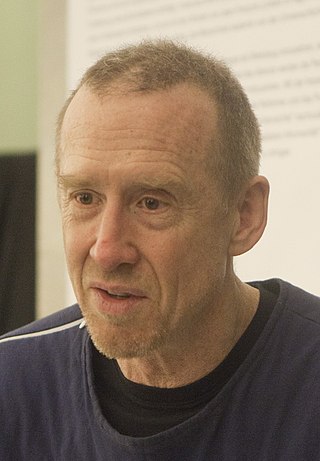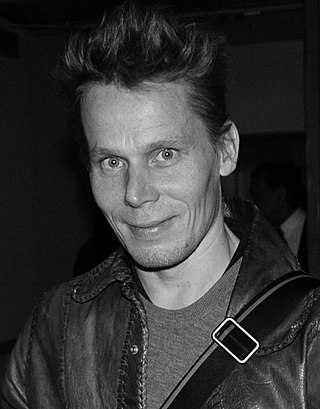Biography
Dominique Bagouet began training in classical dance in Cannes, in the school of Rosella Hightower, and obtained his first engagements at the Ballet du Grand Théâtre de Genève directed by Alfonso Cata, where he danced the Balanchine repertoire. After a period as a dancer with Félix Blaska, then with Maurice Béjart in Brussels, Bagouet discovered the teaching of Carolyn Carlson at the Paris Opera. It was there that Bogouet joined Chandre, a group of former Mudra dancers. He also learned of another dancer, Peter Goss's, teachings while at the Paris Opera.
In 1974, he left for the United States where he acquired the techniques of Martha Graham and José Limón before tackling postmodern dance with Merce Cunningham, Trisha Brown and Lar Lubovitch, among others.
Dominique returned to France in 1976, presenting his first choreography, Chansons de nuit(Songs of the Night), at the Bagnolet International Choreographic Competition. For his performance, Dominique won first prize for his choreography. After winning the Bagnolet competition, Demoniqiue founded his own dance company, named the Dominique Bagouet company, and moved to Montpellier. It was there that he became the director of the first regional choreographic centers, later renamed National Center for Choreography in 1984.
Dominique Bagouet died of AIDS in 1992, just as he was about to begin rehearsels for Noces d'or(Golden Wedding), in honor of his parents' 50th wedding anniversary. Because of his passing, the piece was relegated back to the project stage. Thirteen years later, in 2006, Marie-Hélène Rebois creates a documentary film as of portrait of Dominique and what he envisioned for his ultimate work, bringing the piece to life as Dominique was unable to.
The story of a posthumous performance of his play Jours étranges opens the tribute play Les Idoles by Christophe Honoré.
Dominique Bagouet is buried in the Bardines cemetery in Angoulême.

George Balanchine was a Georgian-American ballet choreographer, recognized as one of the most influential choreographers of the 20th-century. Styled as the father of American ballet, he co-founded the New York City Ballet and remained its artistic director for more than 35 years. His choreography is characterized by plotless ballets with minimal costume and décor, performed to classical and neoclassical music.

William Forsythe is an American dancer and choreographer formerly resident in Frankfurt am Main, Germany, and now based in Vermont. He is known for his work with the Ballet Frankfurt (1984–2004) and The Forsythe Company (2005–2015). Recognized for the integration of ballet and visual arts, which displayed both abstraction and forceful theatricality, his vision of choreography as an organizational practice has inspired him to produce numerous installations, films, and web-based knowledge creation, incorporating the spoken word and experimental music.

Bronislava Nijinska was a Russian ballet dancer of Polish origin, and an innovative choreographer. She came of age in a family of traveling, professional dancers.

The Paris Opera Ballet is a French ballet company that is an integral part of the Paris Opera. It is the oldest national ballet company, and many European and international ballet companies can trace their origins to it. It is still regarded as one of the four most prominent ballet companies in the world, together with the Bolshoi Ballet in Moscow, the Mariinsky Ballet in Saint Petersburg and the Royal Ballet in London.

Lar Lubovitch is an American choreographer. He founded his own dance company, the Lar Lubovitch Dance Company in 1968. Based in New York City, the company has performed in all 50 American states as well as in more than 30 countries. As of 2005, he had choreographed more than 100 dances for the company. In addition to the company, Lubovitch has also done creative work in ballet, ice-skating venues, and musical theater, notably Into the Woods. He has played a key role in raising funds to fight AIDS.

Mark William Morris is an American dancer, choreographer and director whose work is acclaimed for its craftsmanship, ingenuity, humor, and at times eclectic musical accompaniments. Morris is popular among dance aficionados, the music world, as well as mainstream audiences.

William Tass Jones, known as Bill T. Jones, is an American choreographer, director, author and dancer. He is the co-founder of the Bill T. Jones/Arnie Zane Dance Company. The company's home in Manhattan. Jones is Artistic Director of New York Live Arts, whose activities encompass an annual presenting season together with allied education programming and services for artists. Independently of New York Live Arts and his dance company, Jones has choreographed for major performing arts ensembles, contributed to Broadway and other theatrical productions, and collaborated on projects with a range of fellow artists. Jones has been called "one of the most notable, recognized modern-dance choreographers and directors of our time."

Violette Verdy was a French ballerina, choreographer, teacher, and writer who worked as a dance company director with the Paris Opera Ballet in France and the Boston Ballet in the United States. From 1958 to 1977 she was a principal dancer with the New York City Ballet where she performed in the world premieres of several works created specifically for her by choreographers George Balanchine and Jerome Robbins. She was Distinguished Professor of Music (Ballet) at the Jacobs School of Music, Indiana University, in Bloomington, and the recipient of two medals from the French government.

Ballet is a formalized dance form with its origins in the Italian Renaissance courts of 15th and 16th centuries. Ballet spread from Italy to France with the help of Catherine de' Medici, where ballet developed even further under her aristocratic influence. An early example of Catherine's development of ballet is through 'Le Paradis d' Amour', a piece of work presented at the wedding of her daughter Marguerite de Valois to Henry of Navarre. Aristocratic money was responsible for the initial stages of development in 'court ballet', as it was royal money that dictated the ideas, literature and music used in ballets that were created to primarily entertain the aristocrats of the time. The first formal 'court ballet' ever recognized was staged in 1573, 'Ballet des Polonais'. In true form of royal entertainment, 'Ballet des Polonais' was commissioned by Catherine de' Medici to honor the Polish ambassadors who were visiting Paris upon the accession of Henry of Anjou to the throne of Poland. In 1581, Catherine de' Medici commissioned another court ballet, Ballet Comique de la Reine, however it was her compatriot, Balthasar de Beaujoyeulx, who organized the ballet. Catherine de' Medici and Balthasar de Beaujoyeulx were responsible for presenting the first court ballet ever to apply the principles of Baif's Academie, by integrating poetry, dance, music and set design to convey a unified dramatic storyline. Moreover, the early organization and development of 'court ballet' was funded by, influenced by and produced by the aristocrats of the time, fulfilling both their personal entertainment and political propaganda needs.
Barak Marshall is an American-born Israeli choreographer and singer.
Marie-Agnès Gillot is a French ballet dancer and choreographer. She danced with the Paris Opera Ballet as an étoiles. She is also POB's first in-house female dancer to choreograph for the company.
Mathieu Ganio is a French danseur étoile of the Paris Opera Ballet.

Tero Kalevi Saarinen is a Finnish dance artist and choreographer, and Artistic Director of Tero Saarinen Company. Saarinen has made an international career as both a dancer and choreographer.
Non-dance is a choreographic movement within contemporary dance. It began in the 1990, principally in France. Its practitioners see it as a transdisciplinary movement, dispensing with the movement vocabulary of traditional dance to integrate or substitute that of other performing arts.

Wilfride Piollet was a French ballerina and choreographer. She was born in Saint-Rambert-d'Albon. Her philosophy of dance and her research led to the publication of several books. Piollet joined the Paris Opera Ballet company in 1960. She gained the rank "coryphée" in 1963, "sujet" in 1964, soloist in 1966, and was promoted to principal dancer (étoile) in 1969. In 1973, Nouvelle lune c-à-d was created for her retirement of the Paris Opera. Invited as a guest by Rudolf Nureyev, she danced at the Paris Opera until 1990, the year when Jean Guizerix left. At the Paris Opera and worldwide, she performed the classical, neo-classical and contemporary repertory, and from the 1980s, the Baroque and Renaissance ones. She ended her dance career in 2003 with a piece on Isadora Duncan's dances studied with Madeleine Lytton, and performed with Jean Guizerix.
José Montalvo is a prominent French dancer and choreographer. A 2001 winner of the Laurence Olivier Award for Best Dance Production, his work has been performed in Europe, America and Asia.
Dominique Dupuy was a French dancer and choreographer of modern dance. He is best known as a pioneer of modern dance in France. Additionally, he ran a choreographic centre as well as an annual dance festival in Provence.
Mark N Tompkins, is a French artist, dancer and choreographer of contemporary dance.
Cyril Atanassoff is a French dancer of Bulgarian descent.
Ulysse is a contemporary dance work by French choreographer Jean-Claude Gallotta, created in 1981 for eight dancers. It is considered one of Gallotta's most important works, and a cornerstone of the new French dance movement of the early 1980s. Faithful to his desire to revisit his works, Jean-Claude Gallotta has re-choreographed Ulysse on numerous occasions, offering four different versions to date in terms of performers, scenography and music: Ulysse (1981), Ulysse, re-création (1993), Les Variations d'Ulysse (1995) and Cher Ulysse (2007). Les Variations d'Ulysse, commissioned by the Paris Opera, entered the Paris Opera Ballet repertoire in 1995 under the direction of Brigitte Lefèvre.










